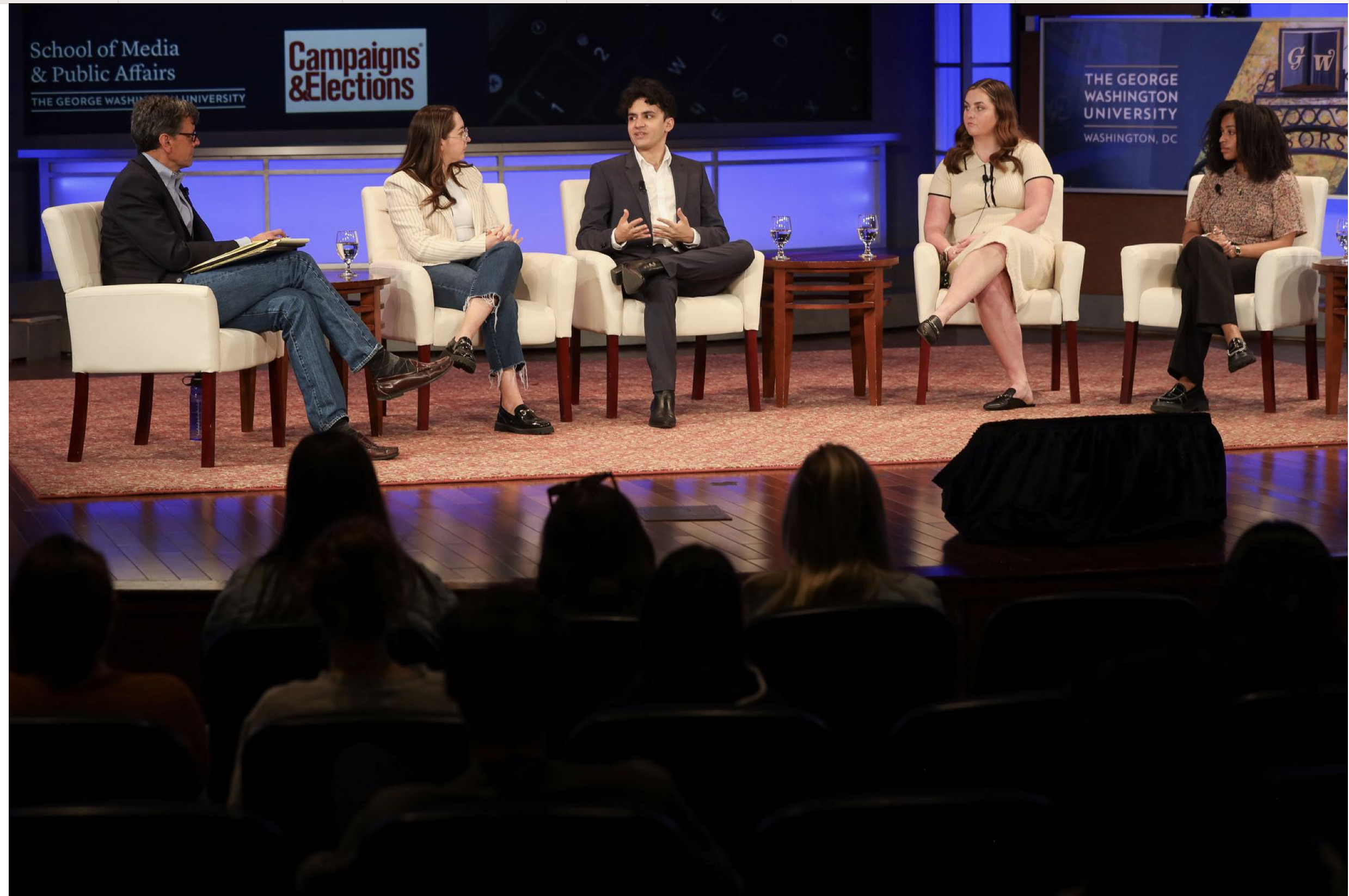This story originally appeared in GW Today.
Politicians have taken to social media platforms as part of their campaigning efforts, including hiring influencers to reach younger voters.
An event hosted by the George Washington University School of Media and Public Affairs (SMPA) as part of the conversation series Campaigns & Elections explored the topic, “Politics In Its Influencer Era: How Digital Creators Are Changing the Future of Political Marketing.” It focused on understanding social media influencers and the role they can play in political campaigns.
The discussion was moderated by Peter Loge, the director of SMPA.
“This year, we've talked to some really interesting people about AI, ethics, the relationships between the press and campaigns and a range of issues,” Loge said. “Tonight, we're going to be wrapping up this year's series with influencers.”
The panelists were Madeline Twomey, the founder and president of the digital consulting firm Rufus and Mane; Liz Ring, the director of performance marketing at Direct Persuasion; Nicholas Anastácio, a senior studying political communication and data science at SMPA; and Sonia Howell, a sophomore studying political communication at SMPA.
The discussion began by defining and categorizing the different tiers of social media influencers.
“So when we think about an influencer, we think about someone who has a large following, and that following is highly engaged. So usually there's a niche topic interest, whether it is cooking or sports,” Ring said. “A micro-influencer has a smaller following, but that following is still very engaged. So anyone can be a micro-influencer.”
Ring gave an example of someone who may post often in a local community Facebook group and receive a lot of engagement on their posts from other members.
Loge posed a question to the group about how to measure engagement and how important a factor it is in marketing compared to follower count.
Twomey explained how TikTok with its “For You” page has changed social media by allowing people who don’t necessarily have large followings to get viewership on their content. Other social media platforms followed suit with similar features.
“So now you can get a ton of views, likes and comments without really having any followers,” Twomey said. “Followers have become a little bit less relevant in terms of how we look at creators or influencers. We want to see a high engagement rate.”
While discussing their personal social media consumption habits, Anastácio said he likes to consume journalistic content but explained he’s more cautious with news he hears from social media personalities.
“Influencers don't necessarily have a fact-checking team or an ethics team. So, they're going to run with a topic, run with breaking news, and they're just going to post immediately,” Anastácio said.
Twomey, discussing how politicians use TikTok, said it’s a great idea for politicians to go where the voters are.
“I think it’s fantastic that the campaign is on TikTok,” Twomey said. “The DNC joined TikTok in 2022. That was a big deal. And during the 2020 campaign, the DNC nor the Biden campaign were allowed to have TikTok because of national security concerns.”
Ring echoed similar sentiments saying she also encourages clients to utilize popular social media platforms to engage with their audience directly.
The panelists also shared their thoughts on President Joe Biden using TikTok while at the same time saying that he would sign legislation that could ban the app.
“I don't think in this situation it's appropriate,” Howell said. “TikTok has become such a powerful tool for my generation for finding out information and passing on information. And so, for Biden to use that to pander to a younger generation, but also saying I would take it from you if I got a chance, I think he needs to pick one side.”
Loge asked Twomey and Ring about the challenges they face while partnering with influencers for political advertisements including how to match nonpolitical influencers with political content.
Twomey said it can be difficult at times and like in many other fields, reaching out to influencers can be met with rejection.
“[Influencers] just get so many inbox requests every single day,” Twomey said. “The people who want to talk about social justice issues or progressive issues are the ones who end up wanting to work with us. But we'll also work with influencers that maybe 1% of their content is talking about politics, and they feel passionate about a certain campaign. So, they want to use their platform to spread that message.”
Loge followed up with a question about how to pick the right influencer for specific content to make sure the message feels authentic.
Ring said when she works with an influencer to get content out, she gives them topics and points to touch on but leaves a lot of room for the influencer to create the content the way they see fit.
“How they want to kind of match that into their content, we leave it up to them because we want them to do it in that way that feels most authentic to their audience,” Ring said.


